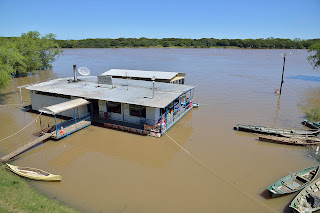Mein erstes Bukowski-Buch,
„Aufzeichnungen eines Aussenseiters“, habe ich vor vielen Jahren
während wenig inspirierenden juristischen Vorlesungen gelesen –
ich war begeistert, habe aber keinen Schimmer mehr, was ich damals
gelesen habe. Dafür habe ich noch Bilder im Kopf von „Das
Schlimmste kommt noch oder Fast eine Jugend“, der Geschichte von
Bukowskis Aufwachsen in Los Angeles.
„Schreie von Balkon“ versammelt
Briefe, die Bukowski von 1958 bis 1994 geschrieben hat, und ist in
der Tat, wie „Der Spiegel“ meint, „ein faszinierender
Briefroman“. Zum ersten Mal laut auflachen musste ich auf Seite 5:
„Ich weiss nicht, es gibt verdammt viel Enttäuschung und
Trickserei in dieser Lyrik-Branche; die Bildung von Gruppen, der
seelenvolle Händedruck, ich druck was von dir wenn du was von mir
druckst, und hätten Sie nicht Lust vor einer kleinen erlesenen Schar
von Homos zu lesen? Ich nehme eine Zeitschrift für Lyrik in die
Hand, blättere die Seiten um, zähle die Sterne und Monde und
Kümmernisse, gähne, pisse mein Bier aus und nehme mir die
Stellenangebote vor.“ Und schon sind die Gefühle, die ich bei
meiner Bukowski-Lektüre vor vielen Jahren verspürte, wieder da. Das
schnörkellose Beschreiben von dem, was ist. Dieser gerade, klare,
unprätentiöse Stil begeistert mich nach wie vor.
Bukowski schreibt wahre Sätze. Solche
wie diese hier: „Gedichte schreiben ist nicht schwer. Danach leben,
das ist schwer.“ Oder diese: „Kapieren die nicht, dass es
schlicht und ergreifend angenehm sein kann, in einem Zimmer zu sitzen
und Bier zu trinken und nicht viel zu sagen; die Welt draussen
spüren, dasitzen und ausruhen.“ Oder diese: „Bin heute schwer
verkatert, aber ich sehe kein zertrümmertes Mobiliar und habe keine
aufgeschürften Fingernägel, also hat es keine Schlägerei gegeben.
Gut.“
Bei Hemingway, schreibt er, sei es
immer um Sieg oder Niederlage gegangen. Bei Camus habe das hingegen
keine Rolle gespielt. Camus' Fremder „hatte den Mut, sich mit allem
abzufinden, statt dagegen aufzubegehren.“ Und er fügt hinzu: „Ich
könnte dieser Typ von Camus nicht sein; ich könnte nicht alles
hinnehmen, um es abzutun, zu ignorieren oder in Trockenfäule zu
machen. Irgendwo zwischen Hem und Camus stehe bzw. sitze ich heute
morgen, verkatert, bleich, weiss, alt. Morgen gehts vielleicht wieder
besser.“
Alle Empfindungen, Gedanken und Gefühle
hat man nur in einem bestimmten Moment. Dann sind sie wieder weg.
Stunden später sieht man alles womöglich wieder ganz anders. Bei
einem Brief ist das klar, bei einem Briefroman wie dem vorliegenden
auch, bei einem Roman hingegen nicht. Deshalb lese ich diese Briefe
als was sie sind: Bestandesaufnahmen von Momenten. Näher an die
Realität kann man mit Schreiben vermutlich gar nicht herankommen.
„Schreie vom Balkon“ sind eine
erfrischende Lektüre. Weil Bukowski anders denkt als die meisten.
Weil er eben auch anders lebt als die meisten: „Wenn ein
Englischlehrer schreiben kann, gut, mir recht. Man muss nicht in
fünfzig Ausnüchterungszellen landen, um zum Leben erweckt oder aus
ihm hinausgedroschen werden. Aber an denen ihrem Leben ist mir etwas
zu risikolos und glatt.“ Und weil er zu anderen Urteilen kommt als
die meisten: „Mir kam der Gedanke, dass Henry Miller der
Allwissende keine Ahnung von Sex hatte und nur darüber reden konnte,
was ja das typische Verhalten von Nichtfickern ist.“
Am 7. Dezember 1963 schreibt er über
John F. Kennedy, der am 22. November 1963 in Dallas. Texas erschossen
wurde: „Du fragst, was ich von Kennedy halte. Gar nichts halte ich
von K. Da unten, wo ich arbeite, haben sie unter seinem Foto ein
schwarzes Schild: MÄRTYRER. Meint ihr wirklich? Harvard? Eine edle
Tusse fürs Bett, die sich eine Wespentaille hinhungert. Die ihr das
Baby im Leib killt? Meint ihr, ein Mensch muss als Märtyrer
betrachtet werden, weil er den Weg des geringsten Widerstandes
gegangen ist? Ist es wirklich die Hölle, schon bei der Geburt mehr
Geld auf der Bank zu haben, als man je ausgeben kann? Ist es die
Hölle, nie darüber nachdenken zu müssen, woher das Geld für die
Miete kommt? Ist es die Hölle, wenn dir jemand eine Kugel in den
Kopf schiesst, statt dass du's selber tun musst? Wo kommt die Hölle
überhaupt ins Spiel, und wie definiert man das? Leiden nur die da
oben?“
„Schreie vom Balkon“ ist ein Buch,
das einen die Welt für einmal anders, ganz anders, sehen lässt.
Charles Bukowski
Schreie vom Balkon - Briefe 1958-1994
Hrsg. von Seamus Cooney, Deutsch von Carl Weissner
Gingko Press, Hamburg 2012
Charles Bukowski
Schreie vom Balkon - Briefe 1958-1994
Hrsg. von Seamus Cooney, Deutsch von Carl Weissner
Gingko Press, Hamburg 2012






.JPG)
.JPG)
.JPG)























































